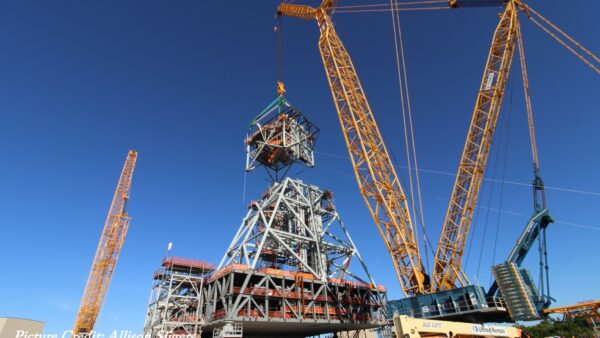Ticketless travel, freight tunnels, swarms of maintenance robots and driverless, sensing trains: could this be the future of rail?Â
A new report by Arup, the global engineering and design consultancy, reveals a bold and imaginative vision of how train travel could be in the coming decades.Â
Future of Rail 2050 foresees predictive maintenance of rail lines by robot drones, driverless trains travelling safely at high speeds, freight delivered automatically to its destination and smart technology able to interface with mobile and wearable devices to improve passenger experience and enable ticketless travel.Â
The report is based on developments from current Arup rail projects and insights from Arup’s thinkers around the world.Â
The report envisions much smarter construction and maintenance techniques to reduce travel delays and make railways more resilient. It predicts intelligent robots building the new infrastructure and retrofitting the old, and small robots working collaboratively on major jobs according to “swarm robotics” theory.Â
Monitoring drones would enable rail operators to perform advanced maintenance on tracks, making journey delays and line closures things of the past.Â
To further increase efficiency and speed of travel, Future of Rail 2050 suggests that automated systems could optimise the running time of passenger trains and increase the reliability and safety of the network. Driverless trains would be in constant communication with one another with the sensors embedded in rail infrastructure, travelling in close succession and responding in real time to their location on a given track.Â
With rail freight activity due to increase globally by up to 250% by 2050, the report foresees elevated platforms and underground pipelines to transport goods, which would free up rail and highway infrastructure for passenger travel. Freight pipelines would use intelligent, aerodynamic pods and embedded sensors, to provide an energy efficient and low maintenance method of delivering goods in heavily populated urban areas.Â
Supporting the above are ongoing developments in nanotechnology, biotechnology, information technology and cognitive sciences, which will see new materials that are lighter, stronger, smarter and greener. Graphene, for example, is revolutionary in its flexibility, strength and conductivity and brings the potential for completely new, reliable rail structures and design.  Â
Integrated transport systemsÂ
To truly deliver a smooth, convenient passenger experience, rail needs to be fully integrated with other modes of transport – a possibility enabled, in part, by big data and the Internet of Things. Greater internet connectivity will provide passengers with accurate, real-time updates on train times and connections to other transport modes, complete with optimum pricing.
 Ticketless technology will remove gate-lines in stations. Authorisation to travel will be universal and payment processed automatically when the journey is taken, allowing a seamless connection between various modes of transport. This could be through interoperable electronic passes (valid for trains, businesses, car sharing schemes and bicycles) or through personal accounts which would authorise travel and automatically process payment – removing congestion at ticket barriers and eliminating unauthorised travel.  Â
Connectivity: plugging into journeysÂ
The convergence of mobile devices, wearable and location-aware technology and big data are at the heart of improving passenger experience. As well as providing accurate, real-time travel information, high-performance networks will grant uninterrupted access to work and entertainment systems on the move.Â
The report imagines a future where train passengers can contact friends, family and colleagues via ‘HoloCalls’ (holographic image displays) and train windows will adjust automatically to prevent external glare. Virtual shopping walls will be located in train stations and even carriages themselves, enabling products from the wall displays to be purchased via mobile devices.Â
“The global urban population is growing rapidly and by 2050, around 75% of the world’s population will live in cities,” said Colin Stewart, Global Rail Leader, at Arup.Â
“This places huge pressure on transport infrastructure and resources, but also creates a significant opportunity for rail, which relies on passenger density to function most effectively. The challenge will lie in juggling the responsibility of providing reliable travel for millions while simultaneously tailoring each journey for the individual.”






